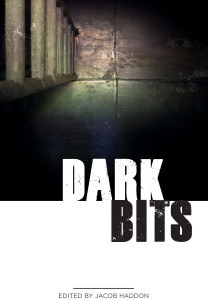In October during Marketing and Promotion month, we had a great post on networking by Kim May. There’s a lot of great advice here on how networking can help you reach and connect with your readers.
This month, I’d like to focus on how to network with industry professionals.
Few of us are lucky enough to have people in the entertainment industry – and yes, writing and publishing are part of the entertainment industry – as part of our circle of family and friends growing up, but it is possible. Ironically, one of my friends-who-is-also-a-published-author started out as the roommate of another friend I met through my toy collecting hobby. Looking back, I laugh at some of our earlier meetings when neither of us had any idea of the other’s interest in writing.
But let’s assume you don’t have a contact like that. I didn’t for many years. How do you meet people who are working where you would like to be someday?
You can read blogs, join newsgroups, “like” Facebook pages, and/or follow Twitter feeds. The best part about these venues is that even if you live in an isolated rural area, and can’t afford to travel, as long as you have Internet access, you’ve got all you need.
First, reading blogs etc will give you a feel for what it’s like to work as a professional writer / in the entertainment industry. You may find it’s not for you. Or, when you reach that point yourself, you will have some idea of what to expect. I’m eternally grateful for the advice from a writer, who is now also a friend, who put on her blog the importance of turning around correspondence for publishers as quickly as possible. They’re people too, they’re on deadlines too, and keeping them waiting and wondering if they are going to hear from you or not is an undesirable situation. As someone who used to submit things on the day they were due–and never before–I realized that holding on to my finished submission until the due date wasn’t doing me any favours. And I would never have realized that without this advice. It’s invaluable, and it’s free.
Comment when you have something useful to say. Over time, people will recognize your name and, if applicable, your avatar. Remember, though, that reputations can be bad as well as good – keep the drama off someone else’s site, or you will be remembered for all the wrong reasons.
Conventions, seminars, launch parties and book signings are great in-person venues if you’re lucky enough to be able to travel or live near a city. Authors and editors will give panels, readings, room parties, and book signings. Attending panels and readings gives you conversation starters when you go to the parties and signings: introduce yourself by name, then ask a question, comment on something, or give constructive feedback. Don’t hog the person’s time – they’ll be meeting a lot of other people at the event. At subsequent events, you can then re-introduce yourself (“we met at Ad Astra this past April”, “I came to your book signing last year in Toronto.”) Faces become familiar very quickly. And I’d be amiss if I didn’t mention Superstars Writing Seminars, where I received great advice from professional writers and also met a number of fellow newcomers just starting out in the field. Look how far we’ve all come!
I’m very fortunate to have a friend who is a New York Times bestselling author–the person who first recommended Superstars to me, despite not being part of it herself. It was her assurance that Superstars was worth the money and time that got me here today. I’m not going to drop her name here, because the purpose of this post is not me showing off how special I am because of who I know. I mention it to illustrate that unfortunately, the following paragraph contains advice that still needs to be shared:
Don’t expect professional authors to become your new best friends. They’re busy people, on lots of deadlines. They have private lives they aren’t going to share with people they’ve just met. They are not going to drop everything to reply to you immediately, and they don’t owe you anything. Be courteous, be respectful, be appreciative, and be professional. These writers are active online and at conventions to connect with their audience and, if they are generous and have time, to share some insight on their profession. You will not become friends with everyone you say hello to, and you will not stay friends (or even acquaintances) if your sole purpose of communicating is to “get stuff,” whether that “stuff” be attention, information, free swag, or “awesome inside sources”. Treat industry professionals as people, not as means to your goals.
When you are at conventions, do attend public events (book signings, autograph sessions, panels, public room parties and launch parties). Do not try to crash private functions (ie author-only parties), follow people into the restroom to strike up conversations, or loiter outside people’s hotel suites waiting to pounce on them. As on the Internet, being loud, drunk, promiscuous, smelly, obnoxiously persistent or rude gives you the wrong reputation very quickly. And remember that alcohol makes all sorts of things seem like A Good Idea At The Time.
As someone who rarely drinks alcohol in public I strongly recommend a glass of pop, soda or juice carried around a room party or nursed at a convention bar if you are a non-drinker or if you have reached your drinking limit. People will think it is a drink (thereby saving yourself the need to constantly turn down offers of drinks) and you will both appear sociable and remain in control of how you are presenting yourself. (I also note that if you are a non-drinker, after seven or eight Dr Peppers you will feel like bugs are crawling all over you, so go easy on the caffeine-as-alcohol-substitute. Lessons from Ad Astra 2013–bad decisions made so you don’t have to!)
The best thing about networking is that it builds its own momentum. Once you know one person, they will introduce you to other people. Soon you’ll find yourself in contact with all kinds of people who are working in, or working towards, your chosen profession.


